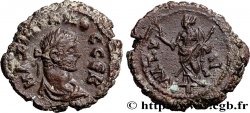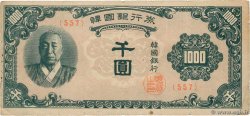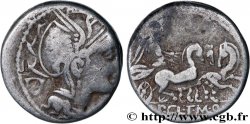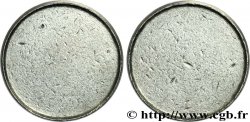Live auction - brm_173838 - MAXIMIANO HÉRCULES Aurelianus
Usted debe firmar y ser un comprador aprobado para pujar, Inicia sesión para pujar. Las cuentas están sujetas a la aprobación y el proceso de aprobación se alcanzan dentro de las 48 horas. No espere hasta el día en una venta se cierra el registro.Al hacer una oferta en este artículo usted está firmando un contrato jurídicamente vinculante para comprar este artículo y haga clic en «oferta» constituye una aceptación de los términos de uso de live auctions de cgb.fr.
La subasta debe ser colocado en euros enteros cantidades venta only.The se cerrará en el momento en la descripción del artículo, no se ejecutarán las ofertas recibidas en el sitio después de la hora de cierre. Veces Transmition pueden variar y las ofertas pueden ser rechazadas si espera a los últimos segundos. Para más información envie el FAQ Live auction.
Las ofertas ganadoras estarán sometidas a un 18% IVA incluido por gastos de participación a la venta.
Las ofertas ganadoras estarán sometidas a un 18% IVA incluido por gastos de participación a la venta.
| Valoración : | 200 € |
| Precio : | no oferta |
| Oferta más alta : | no oferta |
| Fecha de fin de la venta : | 08 octubre 2024 14:33:31 |
Tipo : Aurelianus
Fecha: automne 289 - début 290
Fecha: 289-290
Nombre del taller / ciudad: Lyon
Metal: vellón
Milésimas de pureza : 50 ‰
Diámetro: 22 mm
Eje de acuñación: 1 h.
Peso: 3,48 g.
Grado de rareza: R3
Officine: 2e
Comentarios sobre el estado de conservación:
Exemplaire sur un flan bien centré à l’usure régulière. Beau portrait. Revers tout à fait exceptionnel dans le monnayage lyonnais. Jolie patine marron foncé
N° en los catálogos de referencia :
Anverso
Titulatura del anverso: IMP C MAXIMIANVS P F AVG.
Descripción del anverso: Buste radié et cuirassé de Maximien Hercule à droite avec pan de paludamentum, vu de trois quarts en avant (B01).
Traducción del anverso: “Imperator Cæsar Maximianus Pius Felix Augustus”, (L’empereur césar Maximien pieux heureux auguste).
Reverso
Titulatura del reverso: VICTORIA AVGC/ -|-// S (SIC !).
Descripción del reverso: Victoria (la Victoire) drapée marchant à gauche, tenant une couronne de la main droite et une palme de la main gauche.
Traducción del reverso: “Victoria Augustorum”, (La Victoire des augustes).
Comentario
Poids léger. Sans argenture. Rubans de type 3 aux extrémités bouletées. Cuirasse et épaulière cloutées. Ptéryges fines et tombantes. Orientation des coins inhabituelle. Coin arasé au revers sur le deuxième G de AVGG. Même coins que l’exemplaire du Cabinet des médailles de la BnF, n° 13.663, Bastien, n° 291a, pl. XX. Sur cet exemplaire les lettres de MAXIM semblent regravées sur DIOCLET en particulier les trois premières lettres comme le faisait remarquer D. Gricourt dans son magistral article, “Aureliani de l’atelier de Lyon sous l’empereur Dioclétien : enquête et données nouvelles, RBN. CXXX, 1984, loc. cit., p. 98 : “De fait, en reconstituant de la sorte cette légende antérieure, nous pouvons deviner, sinon reconnaître, respectivement le E de DIOCLETIANVS sous la première partie du 1er M de MAXIMIANVS, le I repris par le dernier jambage de cette lettre M, le O sous le 1er A, le C sous le X, le L habilement transformé en I, le E sous la première moitié du deuxième M et le T sous la seconde fraction de cette même lettre.” “Nous pouvons reconstituer, sans grand risque d’erreur d’interprétation, semble-t-il, le processus qui a abouti à un tel résultat. Comme ce doit être usuellement le cas, dans un premier temps, le scalptor grave sur le coin un portrait, ici de Maximien. Le signator, dans un second temps, poinçonne une titulature, ici de Dioclétien, autour de l’effigie impériale. Dans un troisième temps, la faute est remarquée par l’un des ouvriers en question (le signator lui-même ? le scalptor ?) ou, plus vraisemblablement, par un fonctionnaire de l’autorité impériale chargé de surveiller le déroulement correct des émissions de l’atelier. Dans un quatrième et dernier temps, l’erreur est rectifiée et, pour le cas qui nous concerne, de façon judicieuse et très habile”. Pour ce type, seuls sont connus des aureliani de Maximien Hercule, mais des types pour Dioclétien ont peut-être été prévus et restent toujours à découvrir aujourd’hui.
Lightweight. Without silvering. Type 3 ribbons with pelleted ends. Studded Breastplate and Shoulder Pad. Thin, drooping pteryga. Unusual corner orientation. Flattened corner on the reverse on the second G of AVGG. Same corners as the example of the BnF Medal Cabinet, n° 13. 663, Bastien, n° 291a, pl. XX. On this example the letters of MAXIM seem re-engraved on DIOCLET in particular the first three letters as D pointed out. Gricourt in his masterful article, “Aureliani from the Lyon workshop under the Emperor Diocletian: investigation and new data, RBN. CXXX, 1984, location. quote. ,p. 98: “In fact, by reconstructing this earlier legend in this way, we can guess, if not recognize, respectively the E of DIOCLETIANVS under the first part of the 1st M of MAXIMIANVS, the I taken up by the last leg of this letter M, the O under the 1st A, the C under the X, the L cleverly transformed into I, the E under the first half of the second M and the T under the second fraction of this same letter. ” “We can reconstruct, without much risk of error of interpretation, it seems, the process which led to such a result. As is usually the case, firstly, the scalptor engraves a portrait on the corner, here of Maximian. The signator, in a second step, punches a title, here of Diocletian, around the imperial effigy. Thirdly, the error is noticed by one of the workers in question (the signator himself? the scalptor?) or, more likely, by an official of the imperial authority responsible for monitoring the correct progress of the issues of the workshop. In a fourth and final step, the error is rectified and, in the case that concerns us, in a judicious and very skilful way”. For this type, only aureliani of Maximian Hercules are known, but types for Diocletian may have been planned and still remain to be discovered today
Lightweight. Without silvering. Type 3 ribbons with pelleted ends. Studded Breastplate and Shoulder Pad. Thin, drooping pteryga. Unusual corner orientation. Flattened corner on the reverse on the second G of AVGG. Same corners as the example of the BnF Medal Cabinet, n° 13. 663, Bastien, n° 291a, pl. XX. On this example the letters of MAXIM seem re-engraved on DIOCLET in particular the first three letters as D pointed out. Gricourt in his masterful article, “Aureliani from the Lyon workshop under the Emperor Diocletian: investigation and new data, RBN. CXXX, 1984, location. quote. ,p. 98: “In fact, by reconstructing this earlier legend in this way, we can guess, if not recognize, respectively the E of DIOCLETIANVS under the first part of the 1st M of MAXIMIANVS, the I taken up by the last leg of this letter M, the O under the 1st A, the C under the X, the L cleverly transformed into I, the E under the first half of the second M and the T under the second fraction of this same letter. ” “We can reconstruct, without much risk of error of interpretation, it seems, the process which led to such a result. As is usually the case, firstly, the scalptor engraves a portrait on the corner, here of Maximian. The signator, in a second step, punches a title, here of Diocletian, around the imperial effigy. Thirdly, the error is noticed by one of the workers in question (the signator himself? the scalptor?) or, more likely, by an official of the imperial authority responsible for monitoring the correct progress of the issues of the workshop. In a fourth and final step, the error is rectified and, in the case that concerns us, in a judicious and very skilful way”. For this type, only aureliani of Maximian Hercules are known, but types for Diocletian may have been planned and still remain to be discovered today







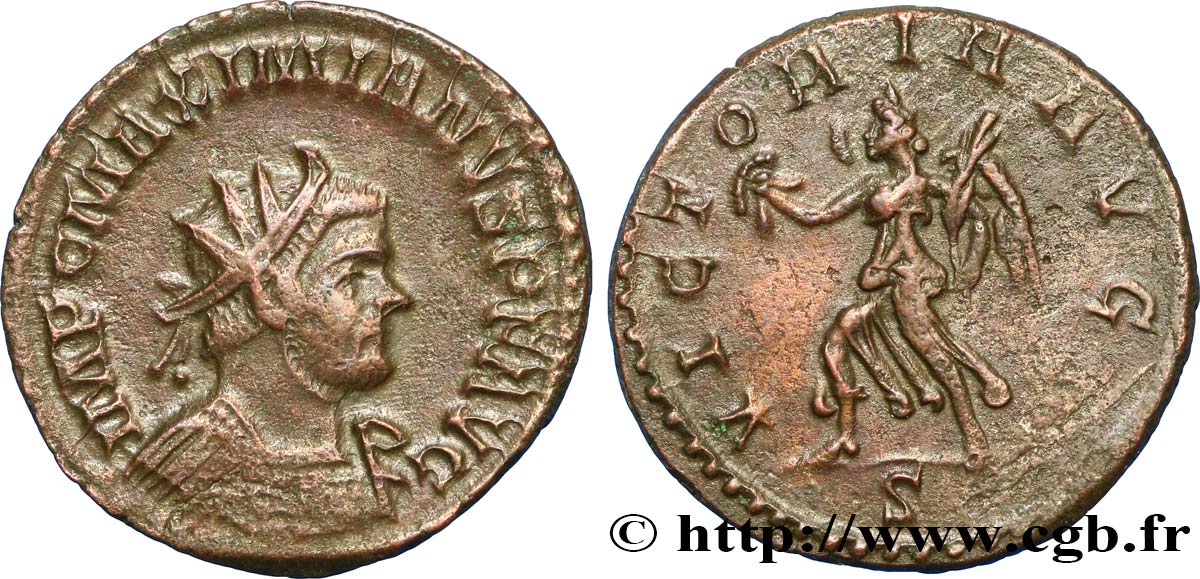
 Informar de un error
Informar de un error Imprimir la página
Imprimir la página Comparte mi selección
Comparte mi selección Haz una pregunta
Haz una pregunta Consignar / vender
Consignar / vender
 Descriptivo
Descriptivo



